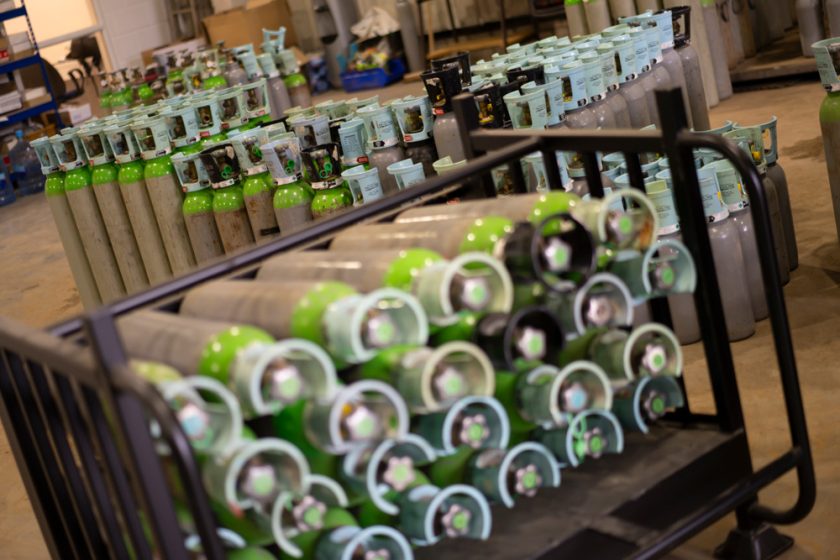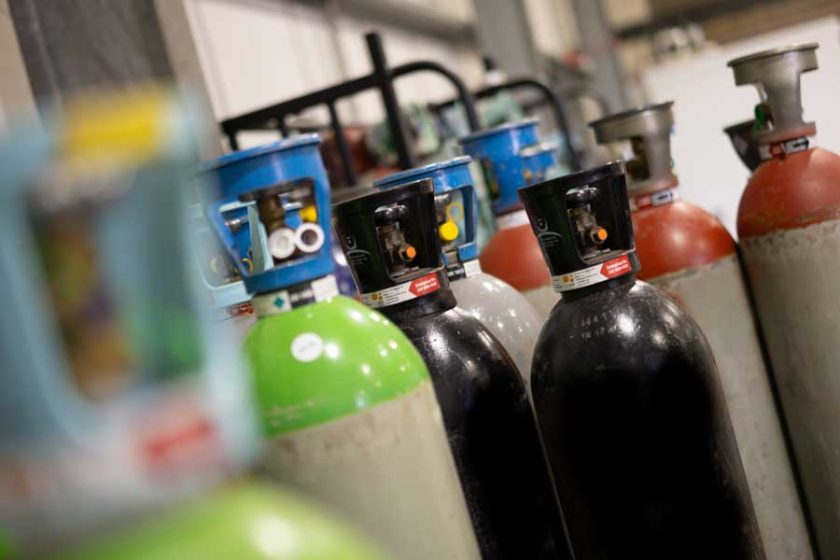It can happen to anyone, at any time but can beer be served from a keg without CO2 gas? A delivery man sets a stack of kegs on a gas line in the basement and a ham-fisted barkeep, moving one of them, breaks a tap.
Even worse, a connector shows its age by blowing a gasket during the busiest night of the week, and there you are, with a keg that’s nearly full and no beer gas to push it with when you need it the most. Is there any way to get around this problem?
There are several ways to make this work in a pinch, but the optimal solution is always going to be a properly working system, with clean lines, good connectors and plenty of cellar gas to minimise the chances of gas system breakage.
If the keg without CO2 gas was already pressurised with gas and is already mostly used up, you can probably finish pouring some or all of the beer out of the keg without the need for more CO2 gas. This assumes there was no broken connection and that the keg is still airtight.
If the keg has never been connected to the gas, or a connection broke and released some or all of the pressurised gas before you got it disconnected, all is not lost. Remember, there is plenty of carbon dioxide in the beer itself. You could shake the keg without CO2 gas vigorously. This will pressurise the keg with carbon dioxide that escapes the beer during the shaking process.
However, it’s only going to work for a short time, depending on how often you’re pouring, and it’s only going to work on a keg that isn’t completely full, but still has over half its contents remaining. With a full keg, there isn’t enough volume of air to pressurise the entire contents of the keg, and with less than half, there is too large a volume of air and the remaining beer gas will dissolve itself back into the beer, resulting in no usable pressure at all.
This leads us to the last and most desperate measure. You must turn to physics. Even the most luscious beer cannot escape the laws of fluid dynamics. Siphon the keg. Here are the steps involved so that beer be served from a keg without CO2 gas:
- Lie the keg on its side, possibly on a crate. Point it at a wall, drain or container to catch any remaining pressurised contents that might spew out. Raise the bottom of the keg slightly above the top with a block, and make sure the in-flow port is oriented towards the floor.
- Attach a connector and tubing, or a hand-pumped picnic tap to the in-flow port on the keg. Make sure to block or pinch this tubing in some way so that you can use it to dispense the remaining beer.
- Attach another connector and open-ended tubing to the beverage out-flow port, which should be oriented towards the ceiling. Make sure to keep the open end of the tubing above the keg at all times. Its purpose is to provide an air inlet so that the beer can gravity-feed out of the in-flow port to empty the keg.
Using a key without CO2 gas is only a temporary solution to this problem. The only true answer is to put your system in working order, make sure the lines are clean, and order high-quality beer gas. Your kegs and your guests will both be thankful that your beer can be served from a keg without CO2 gas!
The CO2 Gas Company offer reliable, quality CO2 gas products with a free emergency delivery service for those sticky situations when you’re out of gas. Our drivers are punctual and experienced and handle orders with the utmost care.





